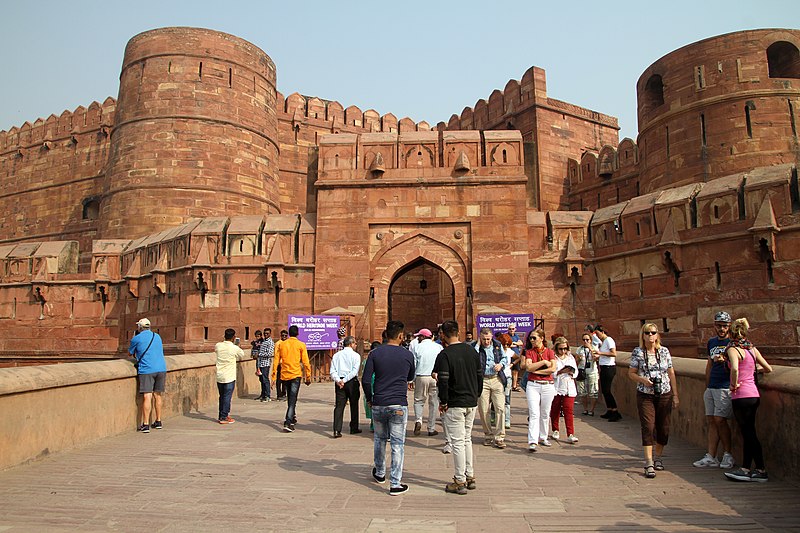Agra Fort, also known as the Red Fort of Agra, stands as a magnificent testament to the grandeur and opulence of the Mughal Empire. Situated in the city of Agra, in the Indian state of Uttar Pradesh, this historic fortress is a UNESCO World Heritage Site and one of India’s most iconic landmarks. With its imposing red sandstone walls, intricate architecture, and rich history, Agra Fort attracts visitors from around the world, eager to immerse themselves in the splendor of Mughal architecture and culture.
The origins of Agra Fort can be traced back to the 11th century when it was initially constructed as a simple brick fortress by the Rajput kings of the Chauhan dynasty. However, it was Emperor Akbar the Great, the third ruler of the Mughal Empire, who transformed the fort into the impressive structure that stands today. Akbar commissioned the construction of the fort in 1565, using red sandstone, the signature building material of the Mughals, to create its formidable walls and majestic palaces.
As visitors approach Agra Fort, they are greeted by its towering walls and imposing gateways, which once served as the main entrances to the fortress. The Amar Singh Gate, named after the Rajput king who surrendered the fort to Akbar, is the primary entrance for tourists today, leading them into the sprawling complex of courtyards, palaces, and gardens that lie within.
Once inside the fort, visitors are transported back in time to the height of the Mughal Empire, when Agra served as the capital of the empire and a center of culture, commerce, and power. The fort’s expansive grounds are home to a wealth of architectural treasures, including the Jahangiri Mahal, the Diwan-i-Khas, the Diwan-i-Aam, and the Khas Mahal, each showcasing the exquisite craftsmanship and artistic brilliance of the Mughal artisans.
One of the most impressive structures within Agra Fort is the Jahangiri Mahal, also known as the Palace of Jahangir. Built by Emperor Akbar for his son Jahangir, this magnificent palace features intricate marble carvings, delicate jali screens, and elaborately decorated chambers, offering visitors a glimpse into the luxurious lifestyle of the Mughal royalty.
Another highlight of Agra Fort is the Diwan-i-Khas, or Hall of Private Audience, where the emperor would receive distinguished guests and conduct state affairs. This ornate hall is adorned with intricate marble inlay work, delicate carvings, and a stunning marble throne known as the Takht-i-Taus, or Peacock Throne, which is said to have been adorned with precious gems and jewels.
The Diwan-i-Aam, or Hall of Public Audience, is another impressive structure within the fort, where the emperor would meet with the common people and listen to their grievances. This grand hall features a beautiful colonnaded arcade, intricate floral motifs, and a raised platform where the emperor would sit in state, surrounded by his courtiers and advisors.
As visitors explore the labyrinthine corridors and hidden passages of Agra Fort, they can also enjoy panoramic views of the surrounding cityscape, including the iconic Taj Mahal, which stands majestically on the opposite bank of the Yamuna River. The fort’s strategic location on a bend in the river made it an important military stronghold and royal residence, offering commanding views of the surrounding landscape and serving as a symbol of Mughal power and prestige.
In conclusion, Agra Fort is a treasure trove of Mughal architecture, history, and culture, offering visitors a glimpse into the grandeur and splendor of one of the greatest empires in the history of India. With its majestic palaces, imposing walls, and breathtaking views, Agra Fort continues to captivate and inspire visitors from around the world, inviting them to explore its storied halls and discover the rich legacy of the Mughal dynasty.



